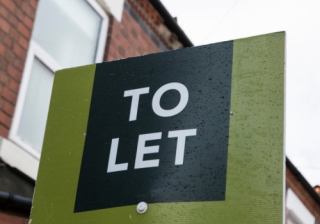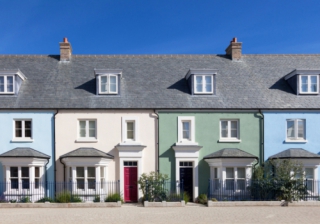
The report also revealed that house price annual inflation was 7.3% in England, 1.0% in Wales, -0.2% in Scotland and 1.5% in Northern Ireland.
Annual house price increases in England were driven by an annual increase in the East (9.7%), London (9.4%) and the South East (8.8%). Excluding London and the South East, UK house prices increased by 5.1% in the 12 months to December 2015.
On a seasonally adjusted basis, average house prices decreased by 0.2% between November 2015 and December 2015.
In December 2015, prices paid by first-time buyers were 6.4% higher on average than in December 2014. For owner-occupiers (existing owners), prices increased by 6.9% for the same period.
Paul Smith, CEO of haart estate agents, had this to say: “Today’s data displays another considerable annual uplift in average house prices across the UK, in part driven by increased levels of competition at the end of last year as buy-to-let investors sought to complete on their second home purchase in anticipation of the 3% stamp duty surcharge coming into effect in April. As we reach mid-February there is little chance of any investor, especially where the transaction is part of a property chain, being able to complete by April and as a result this market anomaly is tailing away.
However, we are still seeing healthy levels of activity in the property market, across both sales and lettings. One of the ongoing problems last year was a shortage of homes, coupled with a high appetite for home ownership, but the New Year has brought with it enhanced levels of activity and the volume of properties put up for sale has increased 5% annually.
Currently the biggest hurdle to an efficient market is a shortage of professional skills. We are finding there are not enough specialists such as surveyors and lawyers to cope effectively with the renewed levels of activity and professional bodies must implement ways of encouraging more talented people into their fields.”
Peter Rollings, CEO of Marsh & Parsons, comments: “2016 has jumped out of the gates, and there’s been a definite buzz in the air of the property market. Existing homeowners have every reason to be in high spirits after the tenacious house price growth experienced last year, which saw average values break through the £300,000 barrier. And buyers climbing onto – or up – the property ladder are hitting the ground running, on the back of favourable mortgage deals and support schemes from the government.
In London, we’ve seen new buyer registrations in January increase 24% on last year, which bodes well for purchase activity in the opening months of 2016. Landlords and investors in particular will be in a hurry to secure their preferred property before the additional 3% Stamp Duty becomes liable on second homes in April. But with annual house price growth in London just shy of double digits, first-time buyers and those trading up also can’t afford to hang about either. The Prime Central market has been challenged and unsettled by steeper Stamp Duty, but in lower-priced boroughs further out of the centre, high demand and low supply of properties coming up for sale are sustaining strong price rises.”
Richard Sexton, director of chartered surveyor e.surv, added: “There seems to be something of a mismatch within the UK housing market at the minute. Mortgage lending remains healthy, reaching its highest peak in nine years in January. A buy-to-let rush to beat April’s stamp duty changes, is part of this story, spurring a notable lending lift.
Buyer’s prospects appear healthy too. With low inflation, rising employment and wages boosting savings potential, home movers should have more options in the housing stakes and be in a better position to pick and choose. But while lending and personal finances aren’t holding aspiring homeowners back – rising prices certainly are.
For these price rises to be fully tackled, supply problems need to be confronted. And crucially, more people need to be encouraged to move. Stamp duty costs, lack of stock and higher prices are deterrents to would be purchasers. As result, people are widening their search areas, and seeking out new potential locations – leading to increased popularity in the East and South East. The appeal of these areas will only grow as those locked out of London look elsewhere.”
Mark Posniak, Managing Director at Dragonfly Property Finance, added: "They may be geographical neighbours but England, Wales, Scotland and Northern Ireland could be in different time zones when it comes to their property markets. The patchwork nature of the property market continues at the regional level. Within England, London, the East and South East are in a different league to other areas of the country.
Although average UK prices may have dipped slightly in December, further price rises throughout 2016 are almost certain. The severe imbalance between supply and demand and the continued low interest rate environment are placing upward pressure on values."
Andrew Bridges, managing director of Stirling Ackroyd said: “London is the undisputed capital of property prices. As values rise, London’s reputation as an international hub remains untarnished. It’s becoming more expensive – but to many it’s still a price worth paying to call the dynamic capital home.
It’s not the old core of the capital which is seeing a spike in price rises – there’s a new momentum underway in London. And just like in the rest of the country, the east is leading the charge. Over 51% of the capital’s postcode districts already fall into the ‘half a million zone’ as of Q3 2015. So it’s new areas which are breaking into this elite club – Mile End, Peckham and Streatham. In today’s London, price rises are being driven by new powerhouses downriver from the old hubs.
For the areas seeing these increases this can be both a blessing and a curse. A sign of popularity but also making it even more difficult for everyday Londoners to get their first step on the property ladder. Supply remains the biggest foe to aspiring buyers. It’s a long term problem which needs a long-term solution – from whoever becomes Mayor in a few short months.”
Randeesh Sandhu, CEO of Urban Exposure, had this to say: “The ONS data today shows house price growth remains strong as supply continues to be constrained, underpinned by robust and growing demand for residential property. In addition, price growth has in part been driven by increased transaction activity by buy-to-let investors seeking to beat Aprils’ stamp duty changes.
In order to tackle house price inflation, more needs to be done to boost development, particularly in London. A key factor preventing development is a lack of access to finance, a shortage of key materials and a skilled workforce. It is therefore essential for the government to bring forward its programme to build 400,000 new homes. Equally it’s important that some of the £7bn being pledged is used to tackle the skill shortages to ensure productivity gains are achieved in the near future.”
Adrian Gill, director of Reeds Rains and Your Move estate agents, comments: “Property in the UK is entering a new phase – developing into the strongest sellers’ market since the recession.
December may have weathered the first month-on-month stumble in house price growth for eight months, but this minor setback hasn’t upset the apple cart. On average, property prices are still increasing at more than twice the pace of earnings, which is certainly jubilant news for existing homeowners. Potential sellers would be advised to get their property on the market now to take advantage of the spring surge that is already following these figures for December.
There are clear signs that some first time buyers are making their own footholds – thanks to hard negotiating and a beady eyed search. But rising prices make it tougher for those still hoping to climb onto the property ladder. While Help to Buy is worthwhile, the best thing the government to do now would be to look at freeing up supply, rather than adding further help to get a mortgage. Cheaper mortgage finance and help with deposits are one thing, but supply is now the bottleneck that needs to be freed.”





